Perhaps you have noticed, let’s say, when out in a dance club or in a room lit with a UV light (because don’t we all hang out in one of these?), that your diamond ring or pendant is glowing? A cool and lesser-known fact about diamonds, both natural and lab-grown, is that about 25% of them visibly glow when exposed to ultraviolet light. When the light is removed, the glow stops. It’s called fluorescence, and it’s caused by the presence of defects in the diamond. A diamond can fluoresce weakly or strongly in any color, but blue is the most common color of fluorescence. Natural diamonds fluoresce differently from lab-grown diamonds, and knowing how to identify them can be an interesting way to impress your friends when you bring out your groovy black light at a party.
We should concern ourselves with fluorescence because fluorescence is graded by the GIA. It is believed that the more strongly the diamond glows, the higher the percentage of defects in the lattice and other elements, and the lesser the quality, and therefore cheaper, the diamond. Fluorescence grades mentioned in diamond certificates refers to the intensity or strength of this glow in response to UV light, more specifically under long wave UV light ( LWUV) . The GIA grades your diamond into one of the following grades, depending on the strength of fluorescence: None, Faint, Medium, Strong and Very Strong. Higher strength of fluorescence may affect the visual appearance of diamond, and consequently their market price. We want to put this phenomenon in perspective, however. Don’t let this feature worry you in your search for a great diamond. Only about 10% of diamonds exhibit fluorescence of such strength that their price is affected.

Diamond Rough Shines Blue if Florecence is Present
And what about phosphorescence? While fluorescence stops when the UV light source is removed, phosphorescence is the visible emission of light that remains afterwards. Phosphorescence does not affect the price of a diamond and hence it is not even graded or mentioned on the certificate. Phosphorescence in a diamond is extremely rare and occurs in .01% of stones. A stunning example of phosphorescence is the famous Hope Diamond, a 45ct blue diamond on display in the Smithsonian Institute, which glows an intense red long after exposure to a UV light source.
Should I worry about fluorescence in my diamond?
The presence or lack thereof when it comes to fluorescence is a debated topic. Do not choose a diamond where the fluorescence is so strong that it affects the color and transparency of your diamond. However, a slight amount of blue fluorescence can make your diamond look whiter and better. Anything is okay, as long as you like it in your diamond.
How does fluorescence affect price?
The most expensive diamonds are those with a ‘none’ fluorescence rating. Your final decision should be based on your judgment, based on naked eye evaluation. Unlike other parameters, where what is the best is well defined, fluorescence is an individual choice.



